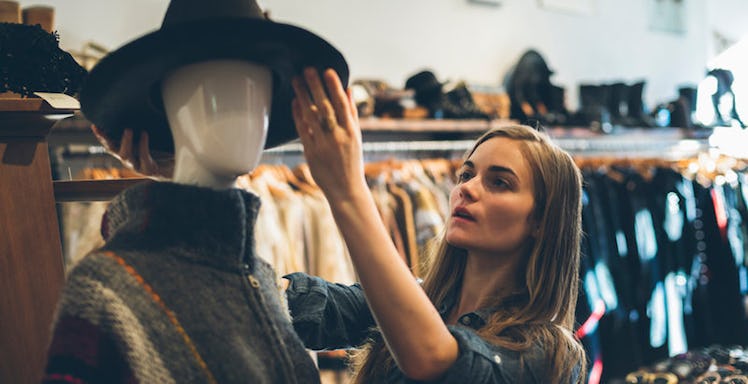
How We Can All Do Our Part To Break Today's Gender Stereotypes
When it rains, puddles often form in potholes and crevices between curbs and sidewalks.
As it continues to rain, these puddles grow. Each time a small droplet falls into this puddle, small ripples move from where the drop first hit the larger body of water to its outer edges.
Slowly, as more water droplets do the exact same thing, the puddle grows and grows.
Just as these water droplets make an empty pothole grow into a large puddle, this is a piece about how small changes can make huge a impact.
I wrote about my grandfather’s cancer diagnosis on Elite Daily a few weeks ago. Sadly, less than two months after he was diagnosed, my grandfather died.
When he passed, I was asked to be one of the pallbearers at his funeral, a role traditionally given to males. Often, six young-adult, male pallbearers are chosen.
In 1921, Lillian Eichler wrote in “Book of Etiquette,” that pallbearers were not to be family members. This tradition has now become rare and slowly following this trend is the idea that pallbearers must be men.
As a young woman who grew up in a traditional Italian family and in the age of people breaking gender stereotypes, I loved the idea that I would be using my strong physique to help carry my late grandfather to his final resting place.
With the amount of people in my family, I’ve unfortunately been to a lot of funerals. At each funeral, I have only ever seen male pallbearers.
Yet, my long hair, knee-length high-heeled boots and neatly filed nails would be joining me as I undertook the pallbearer role.
My grandfather always taught me to shake things up and follow my heart, so being a pallbearer at his funeral was a great way for me to defy traditional gender roles in his honor. I think he would be proud.
The morning of my grandfather’s funeral, my family and I were waiting to say our final goodbyes when one of the funeral home employees approached us and asked the pallbearers to come forward. He handed us a pair of gloves and a white rose, which we would wear as a boutonniere.
A look of awkwardness flashed across the employee’s face as he realized there was no corsage for myself and my other female cousin who would also be a pallbearer.
In time, we fastened the white roses to our collars and put our white gloves into our pockets.
“When we are ready to move the casket, we will have two men at the front and two men at the back of the coffin,” the funeral home employee said. “You two ladies,” he added as he pointed to my cousin and I, “will be stationed in the middle, where the coffin is the lightest."
Of course, it is automatically assumed that four men, two in their 50s and two in their mid-20s, would be stronger than two women, both in their 20s. And, I understand the morning of a funeral probably doesn’t allow for much discussion about who is actually stronger.
So, I bit my tongue and took my middle spot (though, my dedication to the gym would have probably been a decent supporting argument to the idea that I could have stood at the front or back of the casket).
In my boots, frilly dress and fully made-up face, I helped carry my grandfather’s coffin out of the funeral home, into the church and to his grave.
Though that white rose I was given at the beginning of this process was beginning to open up, with white petals falling everywhere, I still wore it proudly above my heart, like a man wearing a boutonniere would, and imagined it was the last physical gift my grandfather would give me.
See, my grandfather used to plant and nurture a beautiful rose garden. After the first bloom, he would snip one rose for me to keep.
This very last rose symbolizes a gift that is a small, but impactful, transition into a less gender-stereotyping world, of which I hope I can continue to be apart.
This story I’ve written here is just one example of how we can each take gender stereotypes and traditional gender roles into our own hands and make small changes in our own families or homes.
We don’t have to be Rosa Parks, Michelle Obama or Beyoncé to make significant changes. None of us need to be superhuman, either.
Just like that small drop of water I wrote about in the anecdote at the beginning of this piece, we are all beings of change who not only change on the inside and out, but also provoke movement all around us, each and every day.